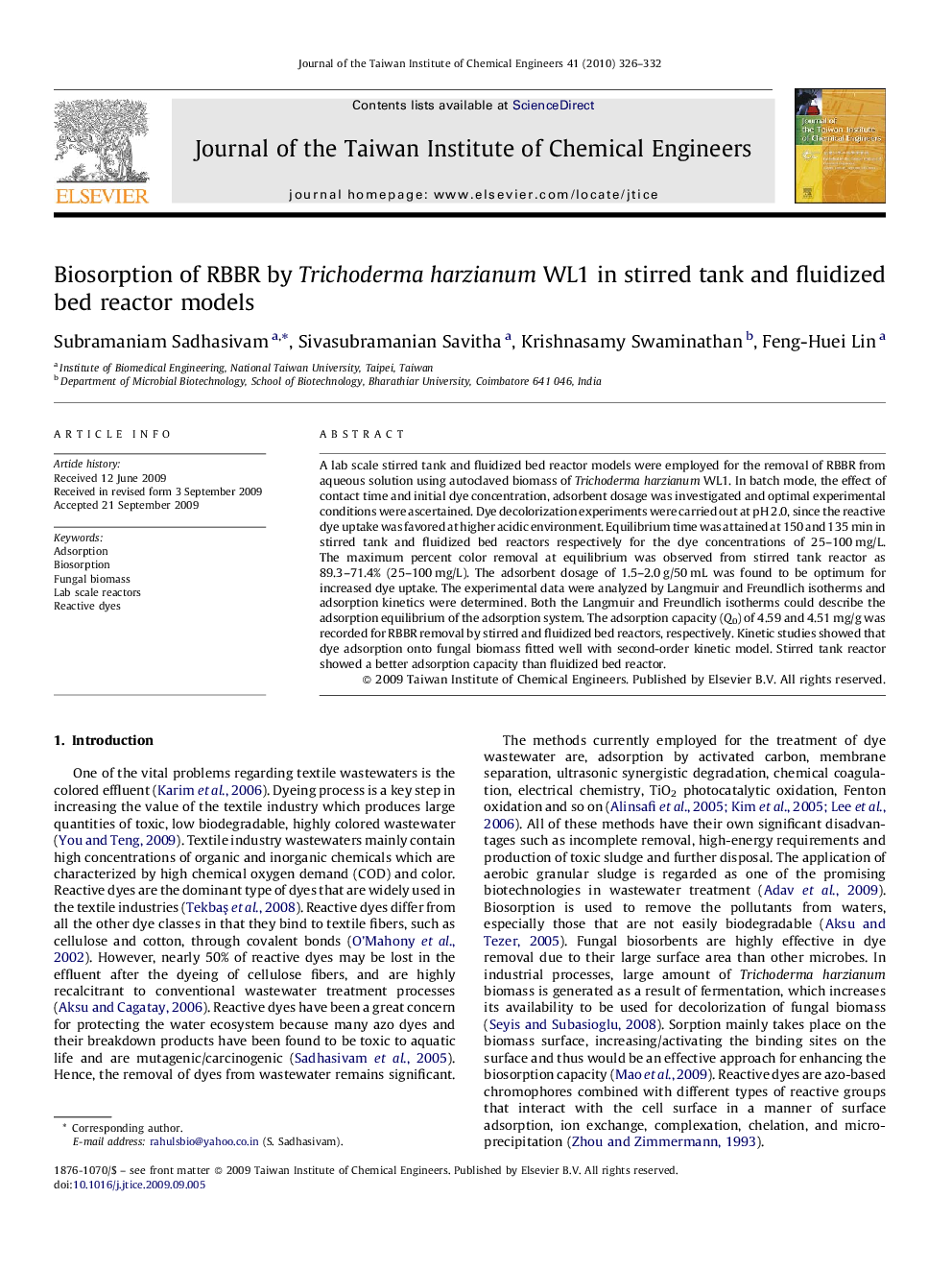| Article ID | Journal | Published Year | Pages | File Type |
|---|---|---|---|---|
| 691922 | Journal of the Taiwan Institute of Chemical Engineers | 2010 | 7 Pages |
A lab scale stirred tank and fluidized bed reactor models were employed for the removal of RBBR from aqueous solution using autoclaved biomass of Trichoderma harzianum WL1. In batch mode, the effect of contact time and initial dye concentration, adsorbent dosage was investigated and optimal experimental conditions were ascertained. Dye decolorization experiments were carried out at pH 2.0, since the reactive dye uptake was favored at higher acidic environment. Equilibrium time was attained at 150 and 135 min in stirred tank and fluidized bed reactors respectively for the dye concentrations of 25–100 mg/L. The maximum percent color removal at equilibrium was observed from stirred tank reactor as 89.3–71.4% (25–100 mg/L). The adsorbent dosage of 1.5–2.0 g/50 mL was found to be optimum for increased dye uptake. The experimental data were analyzed by Langmuir and Freundlich isotherms and adsorption kinetics were determined. Both the Langmuir and Freundlich isotherms could describe the adsorption equilibrium of the adsorption system. The adsorption capacity (Q0) of 4.59 and 4.51 mg/g was recorded for RBBR removal by stirred and fluidized bed reactors, respectively. Kinetic studies showed that dye adsorption onto fungal biomass fitted well with second-order kinetic model. Stirred tank reactor showed a better adsorption capacity than fluidized bed reactor.
